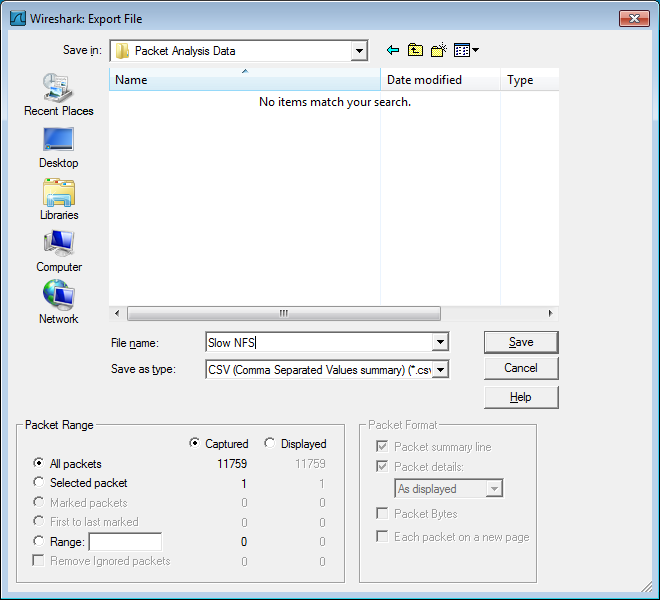

Print wireshark packet on mac to pdf windows#

The following expressions are commonly used:Įxamples of these filter expressions follow: Wireshark's display filter uses Boolean expressions, so you can specify values and chain them together. Example of Wireshark's display filter accepting an expression, but it does not work as intended. Wireshark's display filter accepts an expression, and it works as intended.įigure 4.

Wireshark's display filter offering suggestions based on what you type.įigure 3. If the display filter bar turns yellow, the expression has been accepted, but it will probably not work as intended.įigure 2. If the display filter bar turns green, the expression has been accepted and should work properly.

While the display filter bar remains red, the expression is not yet accepted. If you type anything in the display filter, Wireshark offers a list of suggestions based on the text you have typed. Location of the display filter in Wireshark. This is where you type expressions to filter the frames, IP packets, or TCP segments that Wireshark displays from a pcap.įigure 1. Wireshark's display filter a bar located right above the column display section. Proper use of the Wireshark display filter can help people quickly find these indicators. Security professionals often document indicators related to Windows infection traffic such as URLs, domain names, IP addresses, protocols, and ports. These indicators are often referred to as Indicators of Compromise (IOCs). Indicators consist of information derived from network traffic that relates to the infection. These infections can follow many different paths before the malware, usually a Windows executable file, infects a Windows host. This tutorial uses examples of Windows infection traffic from commodity malware distributed through mass-distribution methods like malicious spam (malspam) or web traffic.
Print wireshark packet on mac to pdf how to#
This is not a comprehensive tutorial on how to analyze malicious network traffic. And you should also have a basic understanding of how malware infections occur. Keep in mind you must understand network traffic fundamentals to effectively use Wireshark. Pcaps for this tutorial are available here. It covers display filter expressions I find useful in reviewing pcaps of malicious network traffic from infected Windows hosts. Today's post provides more tips for analysts to better use Wireshark. To better accomplish this work, I use a customized Wireshark column display as described my previous blog about using Wireshark. Receive notifications of new posts by email.As a Threat Intelligence Analyst for Palo Alto Networks Unit 42, I often use Wireshark to review packet captures (pcaps) of network traffic generated by malware samples. ChallengeĬan you manage to extract the printed pages out of this trace? D ) Filter for the iPhone’s MAC address in the trace to find all appropriate packets: “eth.addr = d4:a3:3d:97:60:6d”: Printing via AirPrint: Overview.įiltering for “ipp” shows only some HTTP-like lines, while there are much more packets involved in the “tcp.port eq 631” flows: Printing via AirPrint: IPP. Hard to troubleshoot, but working without any configuration. My printing of a single page took about 10 TCP/UDP streams and roughly 1200 packets. In my case, the iPhone found the printer via some MDNS discoveries that are shown in the trace as well. AirPrintĪpple’s AirPrint uses the Internet Printing Protocol IPP on TCP port 631 (I have never heard of it). It seems like the mere print data is encoded in the same way as the Raw variant: Printing via LPD/LPR TCP port 515. Wireshark’s display filter is “lpd” while you can find the whole stream with “tcp.port eq 515” or the like. The Line Printer Daemon protocol/Line Printer Remote protocol (or LPD, LPR) uses TCP port 515. You’ll find it via “tcp.port eq 9100”: Printing via Raw TCP 9100. Wireshark has no protocol dissector for this raw printing (little discussion here). It is also called HP Jetdirect, or the like.


 0 kommentar(er)
0 kommentar(er)
